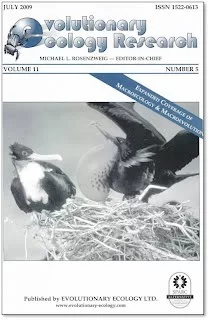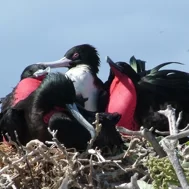Mate Choice
At a broad scale, I am intrigued by the diversity of organisms’ mating systems and the forces that shape that diversity. Most of my work, though, has focused within species, exploring at multiple levels the manifestations of sexual selection.
Primarily, I am interested in how mates are chosen — what traits are desired in a mate, and what cues might be used to recognize a good choice? This is complicated by the fact that for some traits there may be a single ‘best’ phenotype to seek in a mate, while in other cases, the best choice of mate could depend on the traits of the chooser (think of “opposites attract” in people, for instance) or some other context-dependent factor. In yet other cases, any ol’ mate might do. These questions are particularly interesting in the context of the Mhc, a suite of genes whose proteins allow the immune system to communicate about pathogens.


Selected Papers:
Dearborn DC, Gager AB, McArthur AG, Gilmour ME, Mandzhukova E*, and Mauck RA. 2016. Gene duplication and divergence produce diverse MHC genotypes without disassortative mating. Molecular Ecology 25:4355-4367.Kennedy EA, Lattin CR, Romero LM, and Dearborn DC. 2013. Feather coloration in museum specimens is related to corticosterone. Behavioral Ecology and Sociobiology 67:341-348. PDF
Juola FA and Dearborn DC. 2012. Sequence-based evidence for major histocompatibility complex-disassortative mating in a colonial seabird. Proceedings of the Royal Society B: Biological Sciences 279:153-162, with coverage on the website of Science. PDF
Wright SG and Dearborn DC. 2009. Male ornament variation in a sexually dimorphic seabird with variable male mating success. Evolutionary Ecology Research 11:759-770, with cover photo. PDF
Juola FA, McGraw K, and Dearborn DC. 2008. Carotenoids and throat pouch coloration in the great frigatebird (Fregata minor). Comparative Biochemistry and Physiology Part B 149:370-377. PDF
Dearborn DC, Anders AD, and Parker PG. 2001. Sexual dimorphism, extra-pair fertilizations, and operational sex ratio in great frigatebirds (Fregata minor). Behavioral Ecology 12:746-752. PDF